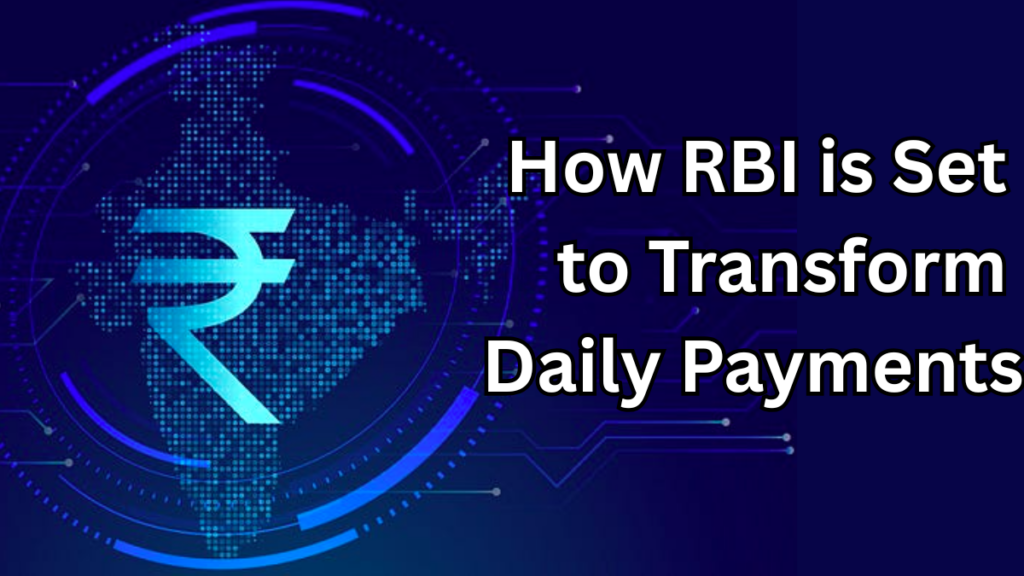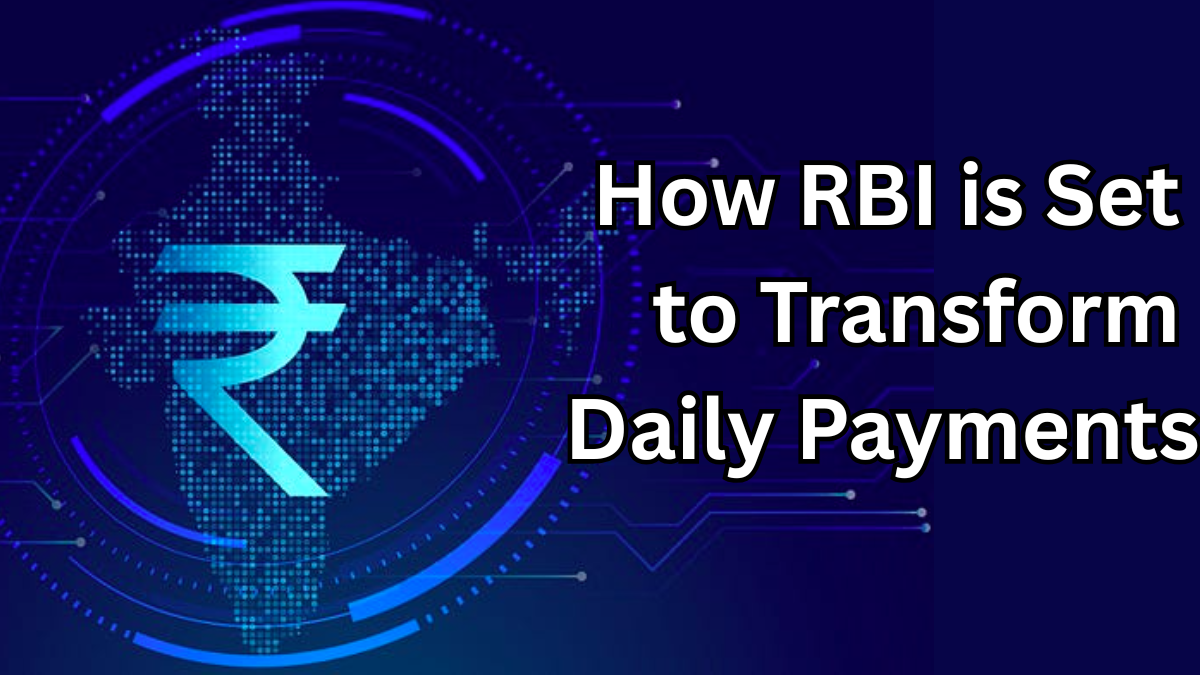The world of digital payments is evolving, and the Reserve Bank of India (RBI) is at the forefront of this transformation. With the RBI’s digital rupee set to expand significantly in 2025, India is on the brink of a new era in financial transactions. The RBI digital rupee update is garnering attention, as it promises to revolutionize the way we make payments, both large and small. Let’s explore how this will reshape daily transactions, from online shopping to paying bills, and what it means for India’s financial future.

What Is the RBI Digital Rupee?
The e-rupee launch marks a pivotal step in the evolution of currency. As part of its central bank digital currency (CBDC) initiative, the RBI is introducing a digital version of the Indian rupee. This government-backed digital currency will serve as legal tender and offer a safe, secure, and efficient way to make transactions.
Key Features:
-
Official Digital Currency: The e-rupee is backed by the RBI, providing trust and security.
-
Faster Transactions: Expect quicker settlements for both large-scale and micro-transactions.
-
Reduced Dependence on Physical Currency: The digital rupee reduces the need for cash, making transactions more efficient.
How the RBI Digital Rupee Will Transform Payments in 2025
The digital rupee isn’t just a new payment method—it’s a game changer that will impact the entire landscape of financial services. Here’s how it’s set to transform daily payments in 2025 and beyond.
1. Seamless and Instant Transactions
-
The digital rupee promises faster and more reliable transactions. With just a few clicks, users can complete payments instantly, whether it’s for groceries, utility bills, or even high-value purchases.
-
Benefit: No more waiting for transaction approvals or facing delays in processing payments.
2. Improved Security
-
With the central bank currency in India, users can expect the highest level of security. The RBI will implement advanced cryptographic measures to prevent fraud and ensure the authenticity of transactions.
-
Benefit: Enhanced protection against cyber threats and fraudulent activities.
3. Lower Transaction Costs
-
Digital currency will eliminate many of the costs associated with traditional payment methods, such as bank fees or intermediary charges.
-
Benefit: Lower fees for businesses and consumers, making financial transactions more affordable.
4. Boosting Financial Inclusion
-
By integrating digital currency into the daily payment ecosystem, the RBI hopes to bring millions of unbanked individuals into the formal financial system.
-
Benefit: More people will have access to banking services, which is especially beneficial in rural or remote areas.
RBI Digital Rupee Update: The Expansion in 2025
In 2025, we can expect the digital rupee to be rolled out on a much larger scale. Initially, it will be available for use in select regions and for specific transactions, but as the infrastructure improves, it will gradually become available nationwide.
Key Milestones of the Expansion:
| Timeline | Event |
|---|---|
| Early 2025 | RBI begins large-scale pilot project in major cities. |
| Mid 2025 | National rollout for select industries, including retail and utilities. |
| Late 2025 | Full-scale launch for all sectors, including government and banking transactions. |
The government’s effort to transition to a digital economy will make India one of the leaders in the global shift toward central bank-backed digital currencies.
Advantages of the Digital Rupee Over Other Payment Methods
While digital payments are already popular, the central bank currency in India will offer several advantages over other forms of payment, such as credit cards and digital wallets.
Comparison of Digital Rupee vs. Traditional Payment Methods
| Feature | Digital Rupee | Traditional Payment Methods |
|---|---|---|
| Security | High (backed by RBI) | Varies (depends on platform) |
| Transaction Speed | Instant | Depends on intermediary |
| Fees | Low or None | Can be high (credit cards, banks) |
| Access for Unbanked | Yes (through mobile devices) | Limited (requires bank account) |
FAQs
1. What is the e-rupee, and how does it work?
The e-rupee is a digital version of the Indian rupee, issued by the RBI. It operates as a legal tender and can be used for everyday transactions like cash, but in a digital format. It’s secure, fast, and backed by the central bank.
2. Will the e-rupee replace physical cash?
No, the e-rupee will complement physical currency. While it will reduce reliance on cash, it’s not designed to replace it entirely. Both forms of currency will coexist.
3. How will the e-rupee impact my daily payments?
The e-rupee will simplify payments by making them faster and more secure. You’ll be able to make instant payments for groceries, bills, and even peer-to-peer transactions without needing a bank intermediary.
4. Is the e-rupee safe to use?
Yes, the e-rupee is designed with advanced security features to prevent fraud and ensure your transactions are safe. It is backed by the RBI, providing a level of trust similar to physical currency.
The expansion of the digital rupee in 2025 marks a significant milestone in India’s journey toward a more secure, efficient, and inclusive financial ecosystem. With a combination of advanced security, lower transaction costs, and seamless integration, the RBI digital rupee update is set to transform daily payments and drive the country’s digital economy forward.
Click here to learn more
Sachin is a dedicated writer specializing in education, career, and recruitment topics, delivering clear and actionable insights to empower readers.
